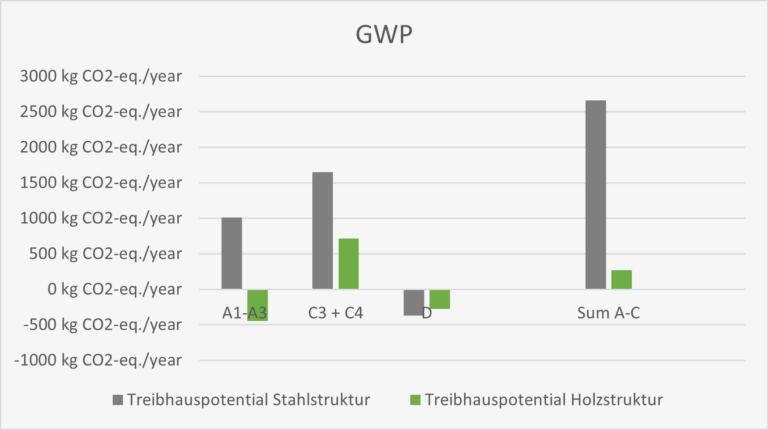In an era where resource-saving and environmentally friendly construction methods are essential, LIGNA systems sets new standards in TIMBER STRUCTURE design. With a comprehensive sustainability concept based on the three pillars of resource conservation, hybrid construction, and cascade use, we offer innovative solutions that are both ecological and economical for construction companies, architects, planners, and clients.
Our truss construction method optimizes material use, enhances efficiency, and supports you in realizing sustainable construction projects that stand the test of time in their full life cycle assessment.
We live sustainability. Our focus is on the future.
The 3 LIGNA
sustainability pillars:
Pillar 1: Resource conservation
Efficient use of timber for maximum savings
Timber is a valuable resource that we use with care and maximum efficiency. Despite exclusively using FSC-certified timber, we anticipate that timber may not remain an unlimited resource in the future. Therefore, our focus is on resource-saving construction methods.
Our innovative truss construction method allows us to save up to 50% of the timber compared to solid wood constructions without compromising stability or load capacity. These material savings not only contribute to more sustainable construction but also make your projects more cost-efficient.
Comparing solid timber beams to truss beams
Our perfected truss construction method maximizes material savings, offering cost-effective and resource-efficient timber structures. For example, a hall built with truss beams uses the same timber volume as a comparable hall with solid timber beams on concrete columns.


Learn more about our timber structures
Pillar 2:
Hybrid construction
Timber structures with steel cladding
All-timber?
Not necessarily!
We believe in using each material where it performs best. LIGNA systems adopts a hybrid construction approach, combining the strengths of timber and steel. For cladding, lightweight metal facade systems like sandwich panels often make more sense than solid wood walls, particularly in terms of lifecycle analysis.
In lifecycle assessments, lightweight metal systems often outperform solid wood walls due to their lower material mass while achieving similar physical properties.
As a result, our timber structures are designed to integrate seamlessly into a variety of building solutions. This approach minimizes the ecological footprint and ensures competitive pricing, particularly for structural costs, against steel or concrete solutions.
Life Cycle Assessment
A lifecycle assessment evaluates a building’s environmental impact throughout its life, from raw material extraction to construction, operation, disposal, and potential reuse.
Timber offers numerous ecological benefits compared to steel and concrete, as highlighted in lifecycle assessments.
Key Metrics: Greenhouse Gas Potential (GWP) & Primary Energy Demand (PENRT)
Timber (green) Compared to Steel (grey)


Timber (green) Compared to Concrete (grey)


Greenhouse Gas Potential (GWP) : Timber has a lower greenhouse potential, storing CO₂ during growth and reducing atmospheric CO₂ levels.
Primary Energy Demand Total (PENRT) : Timber requires less non-renewable primary energy for production and processing, as it is a renewable resource.
Pillar 3: Cascade use
Conserve resources through reuse
Timber is a material too valuable to use only once. Our construction method with detachable connections, such as screws and bolts, ensures that components can be easily disassembled and reused after their lifespan.
We create a circular economy where both timber and steel components can be recycled for new projects.
Wood as a building material:
durable, efficient & eco-friendly
Sustainable, healthy, future-proof – building with wood offers countless benefits. Learn more about the economic and environmental advantages of timber construction and how it can positively impact your next building project.
10 reasons why wood outperforms other materials

„Like no other building material, wood is resource-efficient, reusable, and recyclable.“
We are proud that wood, a natural material with numerous positive effects on the climate and environment, is at the heart of our work. Our commitment to sustainability runs like a red thread through every area of our company. Wood is a valuable resource, and we handle it responsibly, avoiding any waste. Through resource-efficient machinery and the reuse of wood remnants, we consistently implement this philosophy.




